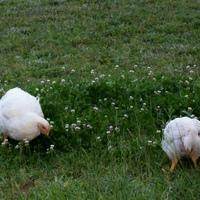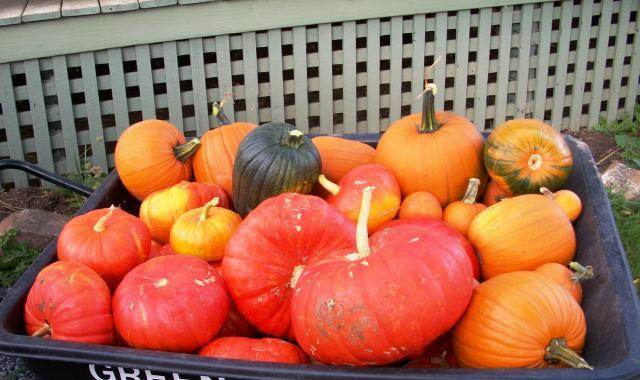












rose macaskie wrote:
Dave Bennet, how do you grow meal worms? rose.
"When there is no life in the soil it is just dirt."
"MagicDave"




1. my projects




It took me several years to get rid of it in my Fiddlehead Fern patch. If you chop and drop it that stuff will not die. Well that has been my experience anyway. I dig it up and try to get all of it. Then I lay it on a huge piece of granite that I found in the dumpster behind one of those granite counter top companies. It is too slippery on the polished side but the unpolished side made a nice mini patio.South Carolina wrote:
Nutsedge is allelopathic??? Does that mean that it is also bad to chop and drop?
I am infested with this stuff. I just mow it and mulch it. I have given up trying to control it.
 I hate that stuff. I let it dry until it is brown then I burn it.
I hate that stuff. I let it dry until it is brown then I burn it. "When there is no life in the soil it is just dirt."
"MagicDave"
 1
1




 1
1








rose macaskie wrote:
Thinking of Sepp Holzers special wheat that he say bares droughts very well and has a long stalk and wondering where to buy old type cereal grains and i was thiniking of chicken seed as i dont think much bigger than chicken, so i googled a string of words i thought might give me results, "organic cereal seed" or some such and found plenty of information though i am too impaitient to talk about it to have read much. It is possible to find old varieties of cereals and it seems there are people collecting them.
The first sight i have searched through a bit has a chicken feed mix and mention numerous plants in its mix including pumpkins a plant one of the contributers here mentioned I remember, it would be polite of me to read the thread through and say who but it is a long thread. It seems feeding pumkins to chickens used to be treaditional normal, their eggs come out with beautifully coloured yolks in the pumkin season according to this site.
The site is- sustainable seed company -, it also offers seeds for producing plenty of compost, long stalked oats foor example whose stalks provide a lot of vegetable matter for te granimals ound it say take a sheath of oats into your yfarm yard and dump it there the horse and cows eat the straw and the chickens the grain, easy feeding system. They also sell things like vegetable seeds.
with the grains have less of are startign out on it seems they are offering specially priced grain if the farmer will give some of the grain he grows back to them. they are looking for farmers to produce grain for them. agri rose macaskie.
"When there is no life in the soil it is just dirt."
"MagicDave"
 2
2




Work smarter, not harder.
 1
1








Leah Sattler wrote:You could always raise turkeys too. They eat acorns and other nuts which are an excellent fend for yourself feed. I don't think chickens could choke down acorns though.
Wild Edible & Medicinal Plant classes, & DVDs
Live in peace, walk in beauty, love one another.
 1
1




Wild Edible & Medicinal Plant classes, & DVDs
Live in peace, walk in beauty, love one another.




Melba Corbett wrote:This covered run expense has been considerable but I'm still not able to keep the squirrels out and it is too far from a power source to put up electric fence. Any suggestions?

 while I was learning... a neighbor used poison in peanut butter. That squirrel made it to their tree in my chicken yard and then drop to the ground. New squirrel replaced him, but by then I had my trapping skills and caught it for release in BLM land, if I had a gun I'd of shot it, I'm very competitive. Next squirrel, living under my house (the nerve) also caught him.... he he he. Buy then we got our dog back and no more squirrels.
while I was learning... a neighbor used poison in peanut butter. That squirrel made it to their tree in my chicken yard and then drop to the ground. New squirrel replaced him, but by then I had my trapping skills and caught it for release in BLM land, if I had a gun I'd of shot it, I'm very competitive. Next squirrel, living under my house (the nerve) also caught him.... he he he. Buy then we got our dog back and no more squirrels.
 2
2








 2
2




paul wheaton wrote:I definitely plan on raising a bunch as meat birds and another bunch as egg birds.
For meat, nothing comes close to cornish/rock cross. I just have to find a way to teach them to forage better.
As for egg layers, I plan on getting six different egg laying breeds, having them intermix a lot, and then trying to come up with my own strain that has a good feed-to-egg ratio in a forage situation.
But, both of these topics are best for another thread.


 1
1




My project thread
Agriculture collects solar energy two-dimensionally; but silviculture collects it three dimensionally.
 3
3





 1
1




My project thread
Agriculture collects solar energy two-dimensionally; but silviculture collects it three dimensionally.




 3
3




Cj Verde wrote:Do you do anything to ferment a pumpkin or do you just let it rot?




 2
2
















Wild Edible & Medicinal Plant classes, & DVDs
Live in peace, walk in beauty, love one another.




circles, cycles, phases, and stages




My project thread
Agriculture collects solar energy two-dimensionally; but silviculture collects it three dimensionally.
 2
2




Mobile Chicken house build-
http://www.permies.com/t/48452/chickens/Mobile-Chicken-house#388147




rose macaskie wrote: Dave Bennet, how do you grow meal worms? rose.
Permaculture: The Edge is the New Center
Taos, New Mexico / Carson, New Mexico / 7000ft / zones 5,6 / Soil: Servilleta-Hernandez / Avg. 13" precip per annum




 1
1












Zone 5/6
Annual rainfall: 40 inches / 1016 mm
Kansas City area discussion going on here: https://www.facebook.com/groups/1707573296152799/




















My project thread
Agriculture collects solar energy two-dimensionally; but silviculture collects it three dimensionally.

|
catch it before it slithers away! Oh wait, it's a tiny ad:
Learn Permaculture through a little hard work
https://wheaton-labs.com/bootcamp
|







